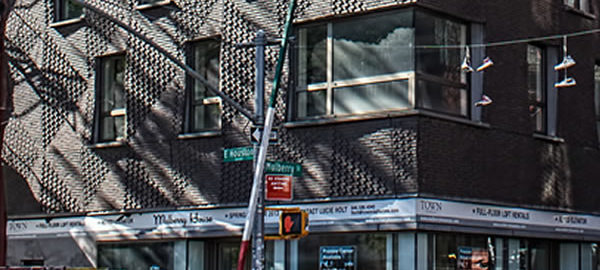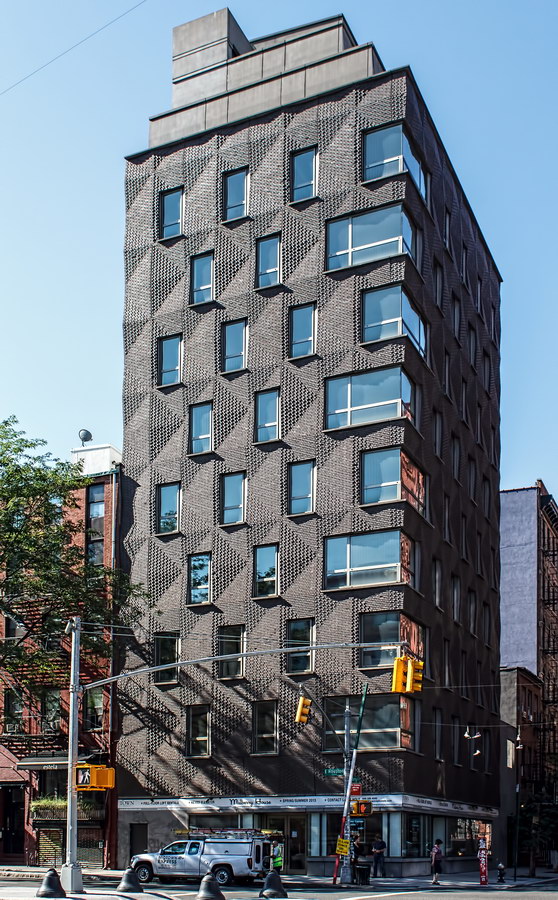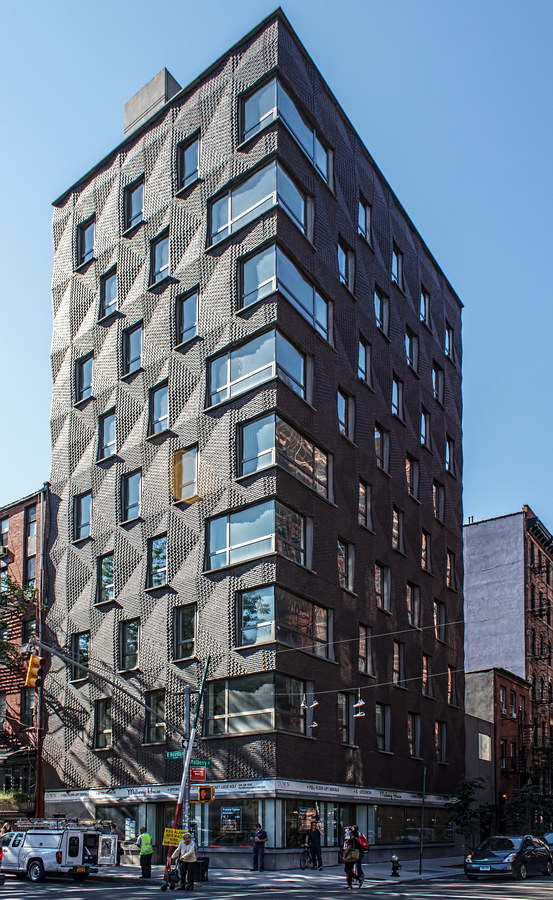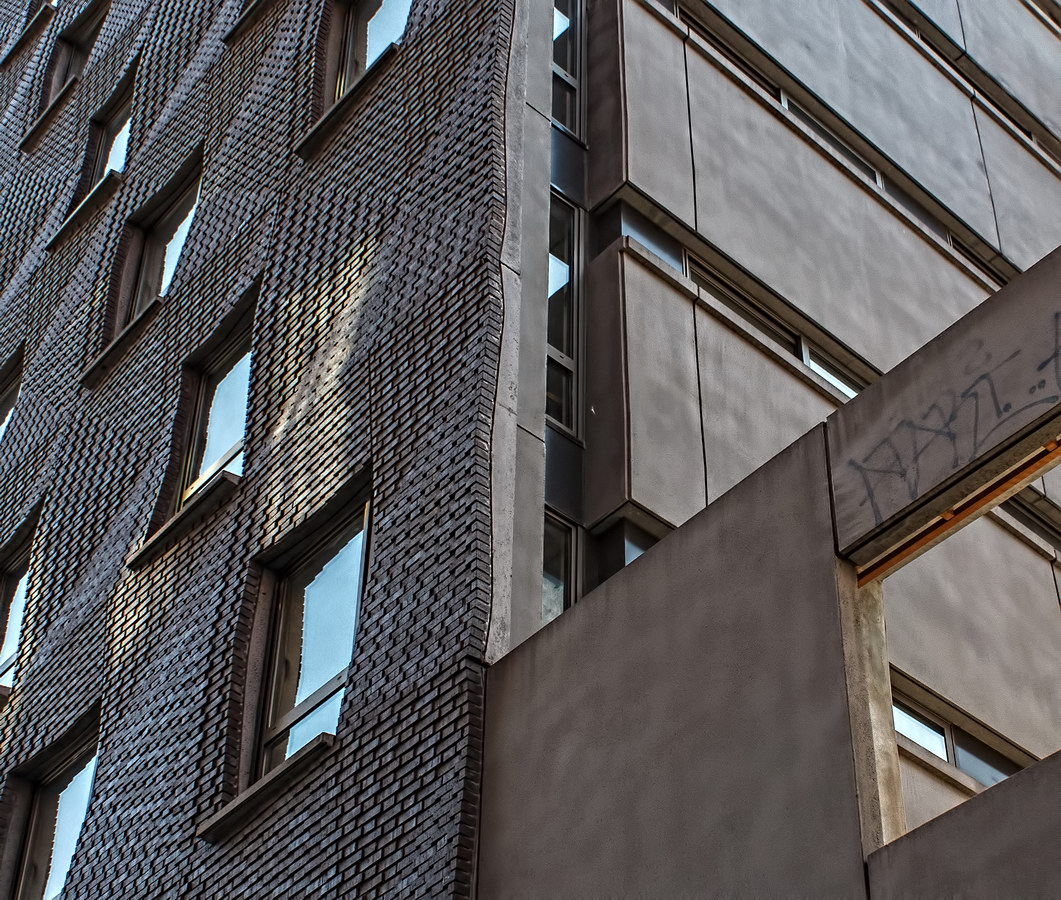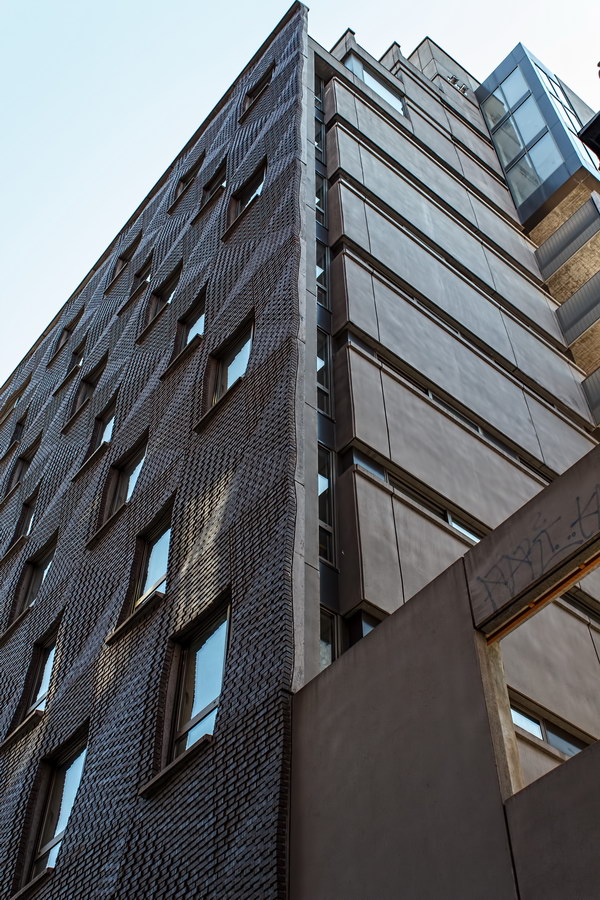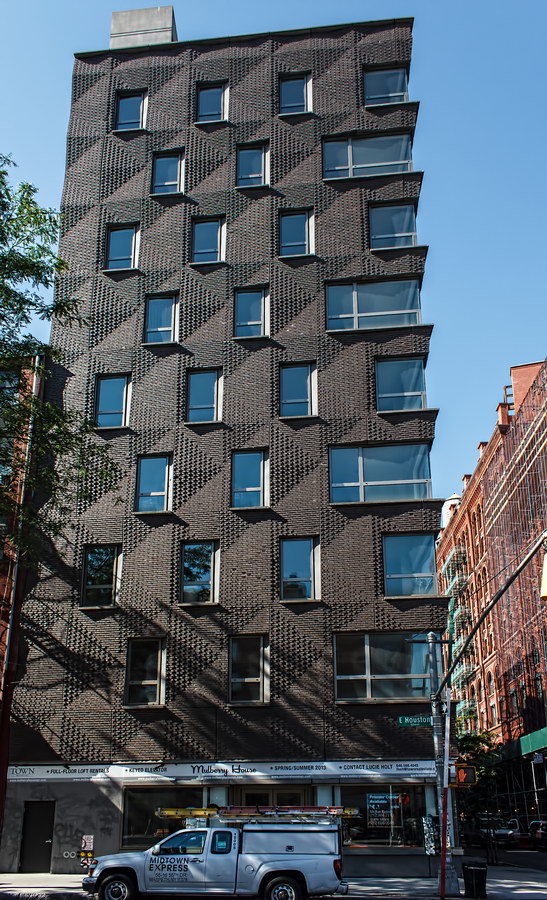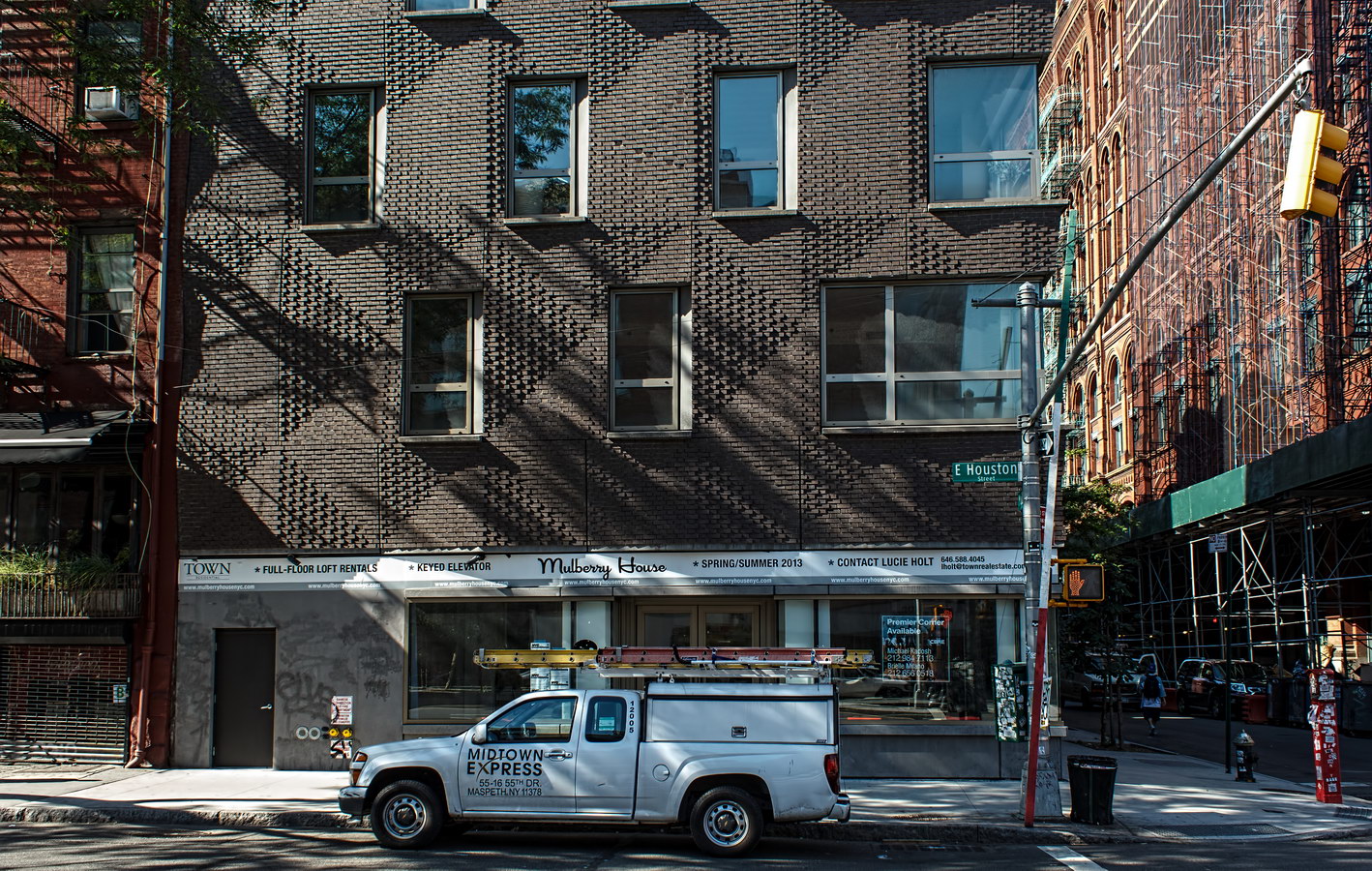Mulberry House demonstrates how architects can play zoning restrictions to circumvent the intent of community planning boards. Here, zoning restrictions were written to preserve the character of the neighborhood. (Mulberry House is directly across the street from the landmark Puck Building.) But as the architects described in ArchDaily:
“Making a literal interpretation of code written for classical ornamentation allowed us to project our enclosure over the property line at 10% intervals for every 100 square feet. Maximizing the amount of projected area, while minimizing the overall depth of the enclosure became key criteria for our design. When coupled with material properties and fabrication constraints, these criteria began to define an approach that was a contemporary reinterpretation of brick detailing. By customizing a standard precast brick panel system, we were able to achieve maximum effect at minimum cost. The building then becomes veiled by an textured wrapper around the street walls in contrast with the simplicity of the inner core.”
Whether you like SHoP Architects’ design or not, you have to admire the texture of the brickwork and its construction. Look up along the building’s southern edge on Mulberry Street, to see the brick-on-concrete panels.* And if you like to see how things are made, Mulberry House’s construction is richly documented on line – browse the Recommended Reading links below for very detailed views and explanations.
Alas, the original developer bailed out on this condo project when the real estate market tanked; the new developer has reconfigured Mulberry House as a rental building. The eight full-floor apartments start at $10,500/month; the one triplex penthouse is reportedly $25,000/month.
* In most modern construction, a steel and/or concrete frame supports the building; brick is only a decorative/protective skin that is attached to the frame.
Mulberry House Vital Statistics
- Location: 290 Mulberry Street between E Houston and Prince Streets
- Year completed: 2013
- Architect: SHoP Architects
- Floors: 13
- Style: Postmodern
